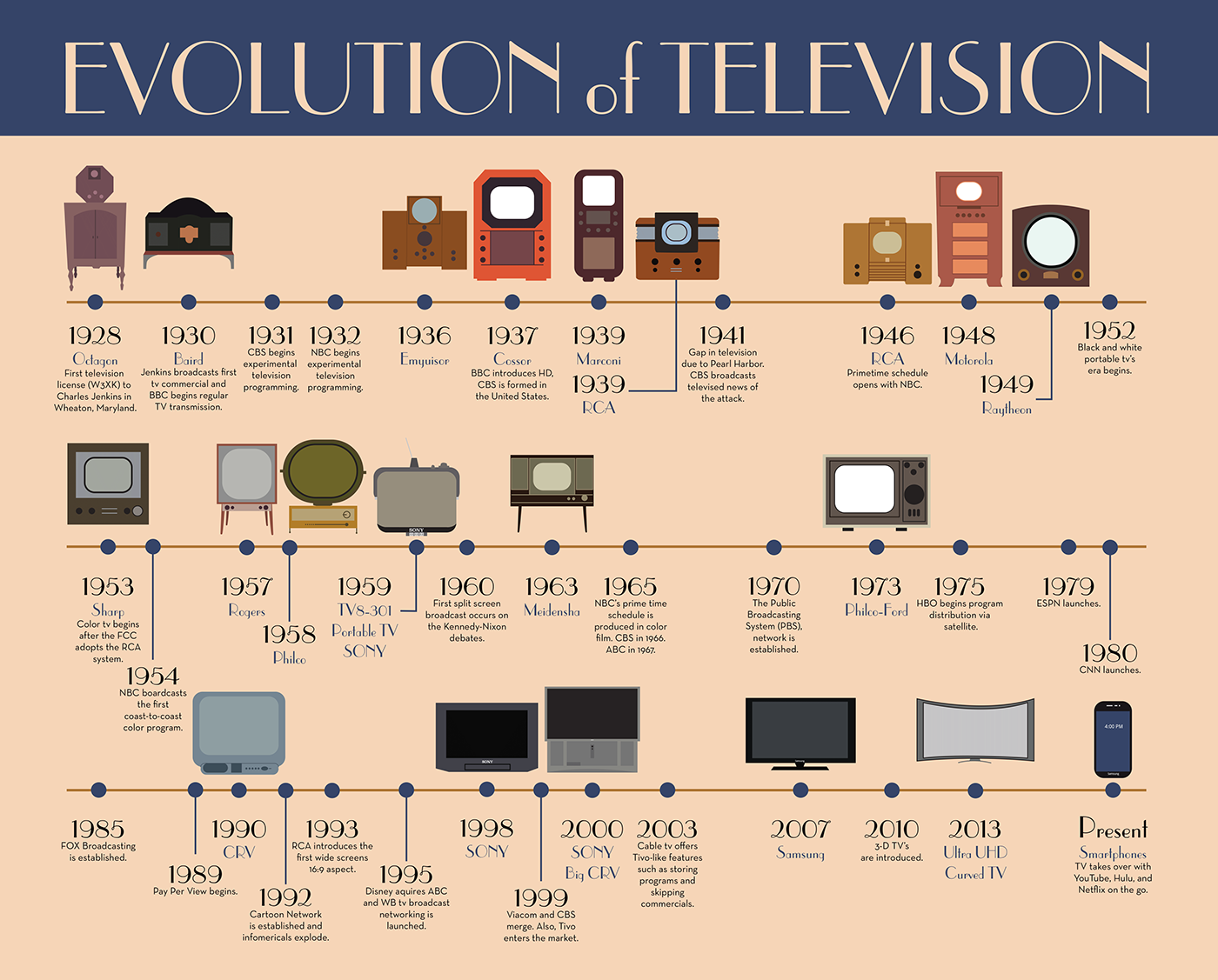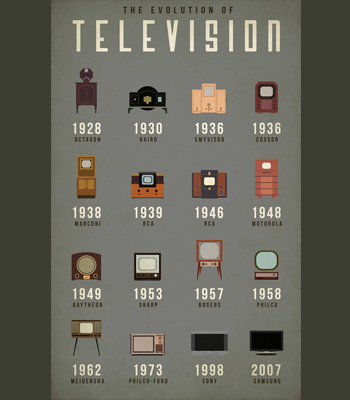The Evolution of TV Shows
1. Introduction
The world of television has undergone a remarkable transformation since its inception. From the humble beginnings of black-and-white broadcasts to the high-definition streaming giants of today, the evolution of TV shows reflects societal changes, technological advancements, and shifting audience preferences. In this article, we will delve into the historical milestones of television, explore significant eras, and speculate on the future of this dynamic medium.

1.1 Brief History of Television
Television began as a scientific curiosity in the early 20th century, but it quickly grew into a staple of modern entertainment. The first public demonstration of television took place in 1927 when Philo Farnsworth transmitted the first television picture. By the 1940s, television had found its footing as a household entertainment source, with the first commercial broadcasts launching in the United States.
As technology advanced, so too did the quality and accessibility of TV shows. The transition from vacuum tube technology to more reliable methods of transmission paved the way for the explosion of content we see today.
2. The Golden Age of Television
The Golden Age of Television, roughly spanning the 1940s to the 1960s, marked a period of innovation and creativity in the industry. This era was characterized by the emergence of iconic series that would shape the landscape of television forever.
2.1 Defining Characteristics of the Era
During this period, shows were typically broadcast live, creating a unique immediacy that captivated audiences. The focus was primarily on drama and variety shows, with programming that often featured prominent actors and live performances. The introduction of color television in the 1950s further transformed the viewing experience, allowing for richer storytelling and more vibrant visuals.
2.2 Iconic Shows and Their Impact
Several groundbreaking shows emerged during the Golden Age, leaving a lasting legacy on television storytelling. Programs like “I Love Lucy,” “The Twilight Zone,” and “The Ed Sullivan Show” not only entertained but also tackled social issues, reflecting the changing attitudes of the American public.
- “I Love Lucy” (1951-1957) is often cited as a pioneer in sitcoms, featuring a strong female lead and groundbreaking comedic techniques.
- “The Twilight Zone” (1959-1964) showcased innovative storytelling and remains a benchmark for anthology series.
- “The Ed Sullivan Show” (1948-1971) introduced audiences to numerous musical acts, solidifying its place in cultural history.

3. The Transition to Color and the Rise of Sitcoms
The introduction of color television in the 1960s changed the game once again. Viewers were treated to a more visually appealing experience, which opened the door to new creative possibilities.
3.1 Technological Advancements
With technological advancements, broadcasting expanded into more diverse genres. The shift from black-and-white to color broadcasts allowed for visually rich storytelling, enhancing the viewer’s emotional connection to the content. The use of special effects and innovative filming techniques also became more commonplace.
3.2 Evolution of Sitcoms: From Classic to Modern
As the popularity of sitcoms grew, so did the variety of themes and narratives. The 1970s and 1980s saw a shift toward more relatable characters and family dynamics. Shows like “The Brady Bunch,” “Cheers,” and “The Cosby Show” brought relatable storytelling to the forefront, often reflecting societal norms and issues of the time.
- “The Brady Bunch” (1969-1974) broke ground by portraying blended families.
- “Cheers” (1982-1993) combined humor with character-driven narratives.
- “The Cosby Show” (1984-1992) showcased a successful African American family, challenging stereotypes and providing a counter-narrative to prevailing media portrayals.
4. The Impact of Cable Television
The rise of cable television in the 1980s significantly altered the television landscape, leading to the emergence of niche genres and premium content.
4.1 Emergence of Niche Genres
With the advent of cable channels like HBO, MTV, and CNN, viewers gained access to a wider array of programming. This diversification allowed for the development of niche genres, catering to specific audience interests.
HBO pioneered the concept of premium content with shows like “The Sopranos” and “Sex and the City,” which featured more mature themes and higher production values.
4.2 Case Study: HBO and the Birth of Prestige Television
HBO’s success in producing high-quality shows marked the beginning of what is often referred to as prestige television. These series not only captured critical acclaim but also set new standards for storytelling and character development in television. The success of shows like “The Wire” and “Game of Thrones” reshaped audience expectations and elevated television to an art form.

As we navigate through the evolution of television, it’s clear that each era has built upon the last, shaping the way we consume stories today. The first half of this article highlights the journey of TV shows from their origins to the transformative impact of cable television. Stay tuned for the second half, where we will explore the streaming revolution and the future of TV.
5. The Streaming Revolution
As we entered the 21st century, the rise of streaming services dramatically changed the landscape of television. Platforms like Netflix, Hulu, and Amazon Prime Video revolutionized how audiences consume content, shifting from traditional cable packages to on-demand viewing.
5.1 Impact of Streaming on Content Consumption
Streaming has not only changed when and how we watch TV but also the types of content being produced. Viewers are now accustomed to binge-watching entire seasons, leading networks to rethink their release strategies. This shift has resulted in several significant changes in the industry:
- Serialized Storytelling: Many shows now favor long-form narratives over episodic formats, allowing for deeper character development and more intricate plots.
- Diversity in Programming: Streaming platforms have made it possible for niche genres and international content to find an audience, resulting in a more diverse range of programming. For instance, shows like “Money Heist” and “Squid Game” gained global popularity, highlighting the appeal of foreign-language series.
- Increased Production Quality: With the competition for viewers’ attention intensifying, streaming services have invested heavily in high-quality productions. This has raised the bar for storytelling, acting, and cinematography across the board.

5.2 Case Study: The Rise of Netflix
Netflix has been at the forefront of this transformation. Originally a DVD rental service, it pivoted to streaming in 2007 and began producing original content in 2013 with “House of Cards.” This marked a significant turning point in television history, as Netflix’s success inspired other networks to create their own streaming platforms and original series.
- Original Programming: With hits like “Stranger Things”, “The Crown,” and “The Witcher,” Netflix has solidified its reputation as a powerhouse in original programming.
- Awards Recognition: Netflix has also received critical acclaim, winning numerous awards, including Emmys and Golden Globes, which were traditionally dominated by cable networks.
5.3 Changing Viewing Habits
The shift to streaming has fundamentally altered viewing habits. Audiences now favor convenience, leading to:
- Increased Mobile Viewing: With the rise of smartphones and tablets, viewers can watch shows anytime, anywhere, creating a more personalized viewing experience.
- Social Viewing: Platforms are now incorporating social features, allowing users to share recommendations and discuss shows in real-time.
6. The Future of Television
As we look ahead, the future of television promises even more changes driven by technology and viewer preferences.
6.1 Emerging Technologies
Several emerging technologies are poised to impact the television landscape:
- Virtual Reality (VR): VR technology could revolutionize storytelling by providing immersive experiences. Imagine stepping into the world of your favorite series and interacting with characters and environments!
- Artificial Intelligence (AI): AI can help platforms deliver personalized content recommendations based on user behavior, making it easier for viewers to discover new shows that align with their interests.
- Interactive Content: The success of interactive shows like “Black Mirror: Bandersnatch” has opened the door for more content that allows viewers to shape the storyline.
6.2 The Role of Social Media
Social media will continue to play a crucial role in shaping the television landscape. Platforms like Twitter, Instagram, and TikTok serve as vital channels for fan engagement, allowing audiences to interact with shows, share their thoughts, and even influence the direction of a series.
6.3 The Return of Live Programming
While on-demand content dominates, live programming is making a comeback. Shows like live sports events and reality competitions are drawing audiences who crave the excitement of real-time viewing.
7. Conclusion
The evolution of TV shows is a testament to the medium’s resilience and adaptability. From the early days of black-and-white broadcasts to the high-quality, on-demand content we enjoy today, television has continually evolved to meet the needs of its audience. As we move into a future filled with technological advancements, the possibilities for storytelling are endless. Whether you prefer binge-watching a new series or tuning into live events, there’s no denying that television will remain an essential part of our lives.
FAQs
Q: What was the first-ever television show?
A: The first television show is often considered to be “The Queen’s Messenger,” which aired in 1928.
Q: How did television change entertainment?
A: Television brought visual storytelling into homes, allowing for new forms of entertainment and making it a staple of daily life.
Q: What is the future of television?
A: The future includes advancements in VR, AI, and interactive content, along with continued growth in streaming and social media engagement.
For more information on the history and future of television, you can check out resources from the Museum of Broadcast Communications or PBS’s American Experience for a deep dive into this fascinating topic.

In the ever-changing world of television, one thing is clear: the only constant is change itself.

